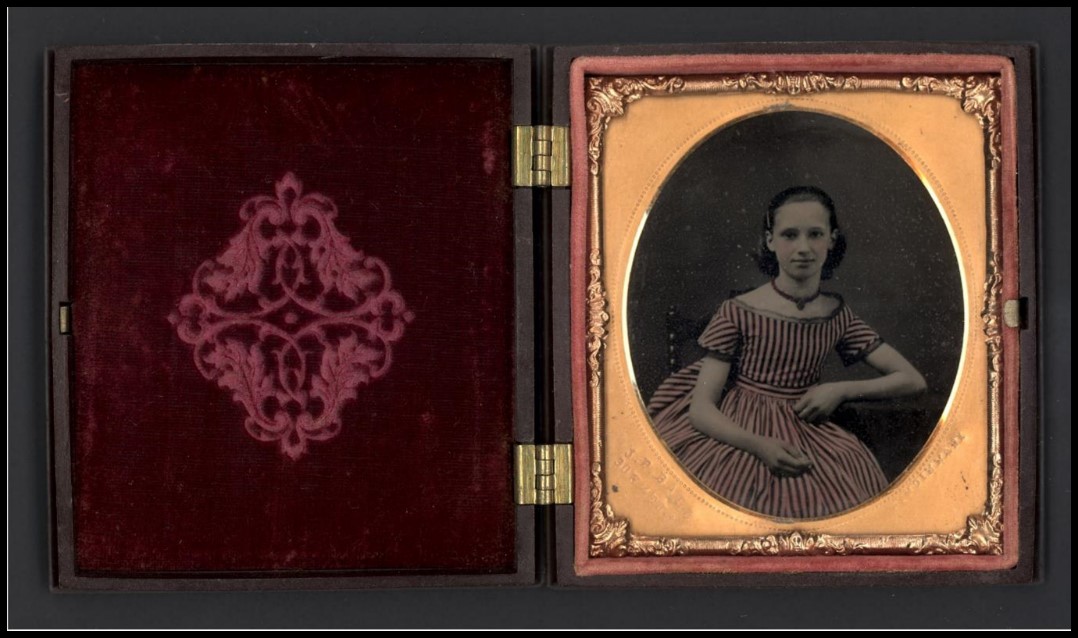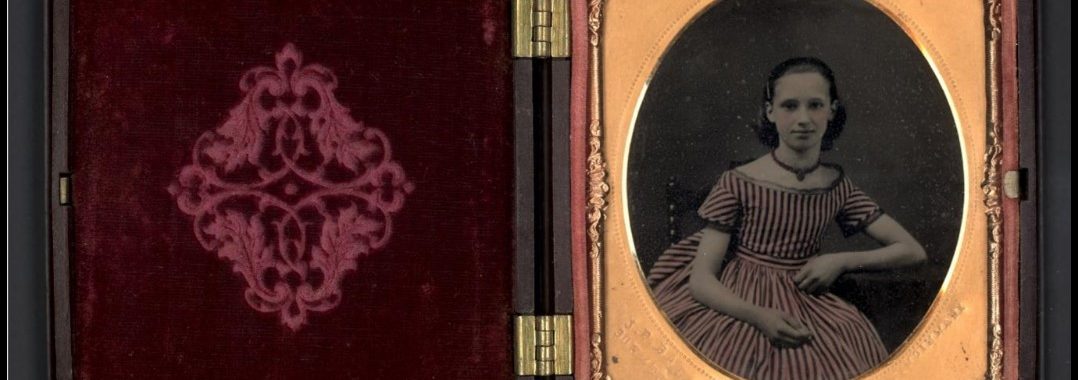
CMC Blog
Early Photography Series 2 of 4 – Ambrotypes
By: James DaMico, Curator of Audiovisual Collections
The ambrotype is a direct positive image and uses the wet collodion plate process. The photographer mixes a liquid emulsion of gun cotton (combination of purified cotton with nitric and sulfuric acid), ether and alcohol. Dangerous stuff to be sure. The result is flowed onto the glass support. The negative is underexposed which gives it a creamy image tone. When placed against a dark background, the creamy image appears as the light tones of the positive image. The area without image particle (i.e. clear in the negative) shows the dark background and becomes the dark tones of the positive image. The black background is created in a variety of ways including coating the back of the glass with black lacquer, laying the glass on a piece of black fabric or using dark glass, often called "ruby glass," instead of clear glass. As with collodion negatives, ambrotypes are often coated with a protective varnish.

Portrait of an Unidentified Young Girl.
J. P. Ball Collection. (SC#17)
Ca. 1850s
1/6 plate, hand-tinted ambrotype (2 ¾” x 3 ¼”)
The image you see here is a portrait of an unidentified girl taken by J.P. Ball circa 1854-1860. This hand tinted 1/6 plate (the most common size) measures 2 ¾ x 3 ¼ inches and is stamped on the mat with J.P. Ball, 30 W. 4th St., Cincinnati.
Like a daguerreotype, an ambrotype is usually encased. Unlike a daguerreotype, it remains a positive image under all viewing angles.
The Photography Department of Cincinnati Museum Center holds about 1 million photographic prints, negatives, slides, glass plate negatives, and cased images such as daguerreotypes.
Museum Admission
Includes Cincinnati History Museum, Museum of Natural History & Science and The Children’s Museum.
| Adult (13+): | |
| Senior (60+): | |
| Child (3-12): | |
| Member Adult: | FREE |
| Member Child: | FREE |
Members receive discounts!
Become a Member today to save on programs, exhibits and films throughout CMC.
Museum Hours
Open Thursday – Monday
10 a.m. to 5 p.m.
Closed Tuesday and Wednesday
Closed Thanksgiving Day and Christmas Day
Member’s-only early entry: Saturdays at 9 a.m.
Customer Service Hours:
Monday – Sunday, 9 a.m. to 5 p.m.



